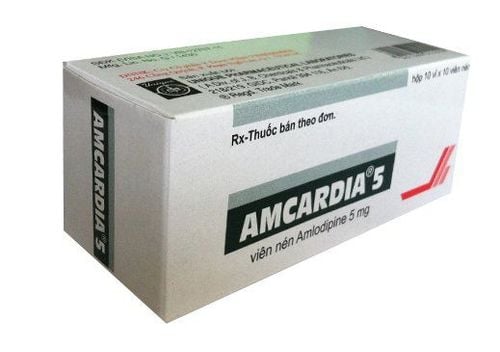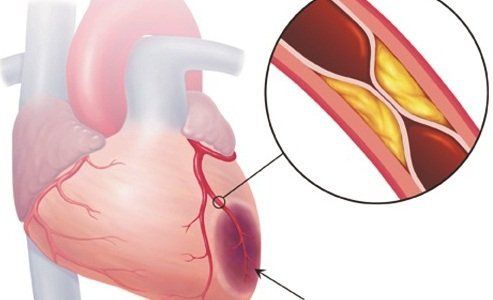This is an automatically translated article.
The article is professionally consulted by Interventional Cardiologists, Department of Medical Examination & Internal Medicine, Vinmec Hai Phong International General Hospital.Since its inception, the fractional coronary flow reserve (FFR) method has increasingly become a useful tool to assist interventional cardiologists. Many researchers around the world have demonstrated the important role of FFR in the diagnosis and treatment of coronary artery disease.
1. FFR in the diagnosis of coronary artery disease
Fractional Flow Reserve (FFR) is a parameter that helps to evaluate the ischemic potential of a lesion that narrows the coronary artery and has little effect. by hemodynamic factors, calculated as the ratio of maximum flow through the stenosis (Qs) divided by the maximum normal flow rate (Qn). Coronary stenosis lesions with an FFR < 0.8 are considered potentially ischemic and require reperfusion therapy.This method is indicated for the following patients:
Patients with moderate coronary stenosis (stenosis from 40-70%) on catheter angiography, including cases of restenosis in old stents coronary arteries; Patients need to be diagnosed at risk of myocardial ischemia; Patients with diffuse stenosis at multiple sites on the same coronary artery, to determine which site is the most significant stenosis; The patient has narrowing at the bifurcation site and a decision should be made whether to intervene in the lateral branch; Follow-up after coronary angioplasty/stent intervention to evaluate outcomes and assess side effects.

Phương pháp được chỉ định cho bệnh nhân hẹp mạch vành mức độ vừa
2. How to measure FFR
The doctor will insert an interventional catheter into the opening of the damaged coronary artery. Then drive the pressure gauge lead through the lesion to the normal distal segment of the blood vessel. The pressure gauge wire is then connected to the gauge. Heparin and nitroglycerin are used routinely as in interventional cardiovascular procedures. Maximal myocardial congestion is achieved by injecting a vasodilator directly into the coronary artery lumen via a catheter (IC) or by intravenous (IV) vasodilator infusion. The most commonly used drugs are adenosine or papaverin. Then the coronary reserve fraction will be calculated automatically.3. The role of FFR in the treatment of coronary artery injury
FFR is strongly correlated with myocardial ischemia, and can be used to predict cardiovascular events in patients. The threshold for diagnosis of myocardial ischemia is agreed by the authors as FFR < 0.8. An FFR at this threshold indicates significant stenosis and requires reperfusion, while an FFR ≥0.8 can be managed conservatively without increasing the patient's cardiovascular risk.In clinical practice, visual assessment of coronary artery damage on contrast angiography is still the basis for myocardial reperfusion intervention. In many interventional cardiology centers, this is the only measure available. Although the assessment of coronary angiography is quick and relatively accurate, especially with experienced physicians, it is still subject to error and the conclusions obtained are not always consistent.
In a recent report, statistics in 2500 cases of FFR evaluation showed that on the chart, there are many narrow lesions below 50% with FFR below the threshold of 0.75 (meaning myocardial ischemia), in when multiple lesions are stenotic above 70% but FFR >0.75. The distribution of results is very heterogeneous, making it difficult to make treatment decisions for each specific patient.
However, based on coronary angiography alone, physicians tend to intervene in 40% of lesions. While based on FFR, the myocardial reperfusion rate is only 23.8%. Thus, the FFR survey helped to reduce the number of unnecessary stenting cases by 16.2%. Results of FAME study showed that 30% of stents can be reduced after using FFR.
According to the FAME study, FFR helps to reduce the number of stents, consume less contrast media, as well as save costs for patients and the medical system in the treatment of coronary heart disease.
When it comes to conservative treatment of lesions that would otherwise require intervention (if FFR is not present), the question for the clinician is: does this increase the risk to the patient. The NUCLEAR study and numerous scientific studies have demonstrated that if the patient is truly ischemic, delaying reperfusion will increase future cardiovascular events. However, the 5-year follow-up of 315 patients in the DEFER study showed that, in patients with moderate coronary artery stenosis, if the FFR ≥0.75, medical treatment did not increase the rate of myocardial infarction and death. due to cardiovascular disease, compared with reperfusion (p=0.21).
In the first 2 years, functional symptoms in the medical treatment group were similar to the intervention group. But after that, the functional symptoms of the conservative treatment group tended to be better, represented by an increased rate of chest pain relief, p = 0.021. The DEFER study allowed the conclusion that, with coronary artery stenosis without hemodynamic effects (FFR negative), reperfusion intervention was not superior to conservative treatment in terms of symptom improvement as well as conservative treatment. as prevention of major cardiovascular events for patients.
4. Why should FFR method be implemented at Vinmec Hai Phong?

Tại sao nên thực hiện phương pháp FFR tại Vinmec Hải Phòng?
Here, in addition to standard machinery and procedures, the effectiveness of the technique is also guaranteed thanks to The team of doctors is the leading cardiologists. Especially at Vinmec Hai Phong, there is also Prof. Dr. Do Doan Loi returns for regular check-ups. Prof. Dr. Do Doan Loi with nearly 40 years of experience in the field of examination and treatment of cardiovascular diseases, used to hold many important positions at major hospitals such as: Deputy Director of Bach Mai Hospital; Director of the Vietnam Heart Institute and currently a senior consultant at Cardiovascular Center - Vinmec Times City International Hospital. GS. Dr. Loi has strengths in examination, diagnosis, treatment and emergency of Cardiovascular and Internal Medicine diseases; echocardiography; directing the organization of cardiovascular intervention.
Please dial HOTLINE for more information or register for an appointment HERE. Download MyVinmec app to make appointments faster and to manage your bookings easily.













